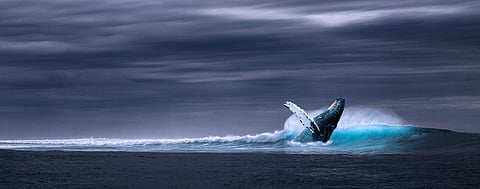

On Saturday UN lawmakers signed a historic deal to protect marine life in the high seas. Over 15 years in the making, and involving negotiators from over 100 countries and five rounds of complex talks, the "Biodiversity Beyond National Jurisdiction" treaty was finally passed in New York on Saturday, one day after the original deadline.
The treaty is a legally-binding framework for the "conservation and sustainable development of marine biological diversity in areas beyond national jurisdiction". Covering almost two-thirds of ocean lying outside national boundaries, it provides a legal mechanism to establish marine protected areas (MPAs) in international waters, vast areas in which fishing and other access to resources will be restricted. To provide oversight, a new international body will also be established to hold member states to account regarding governance and biodiversity.
Until now, only 1% of the high seas have been protected, leaving marine life at risk from overfishing, shipping traffic, pollution and other threats caused by human activity. The new treaty will formally protect 30% of the world's oceans, put more money into marine conservation, and regulate access to and use of marine "genetic resources", such as deep-sea marine sponges, krill, corals, seaweeds and bacteria.
The treaty also stipulates that countries will need to conduct impact assessments of planned activities on the high seas. However, countries' existing regulatory bodies for activities such as fisheries, shipping and deep-sea mining may be exempted from carrying out environmental impact assessments laid out by the treaty.
UN Secretary General António Guterres hailed the new treaty as a "breakthrough", saying in a statement that the treaty "is also vital for achieving ocean-related goals and targets of the 2030 Agenda for Sustainable Development, and the Kunming-Montreal Global Biodiversity Framework." Guterres referred to the "30×30" pledge made by the UN in December 2022, intending to protect a third of the world's biodiversity, both on land and sea, by 2030.
